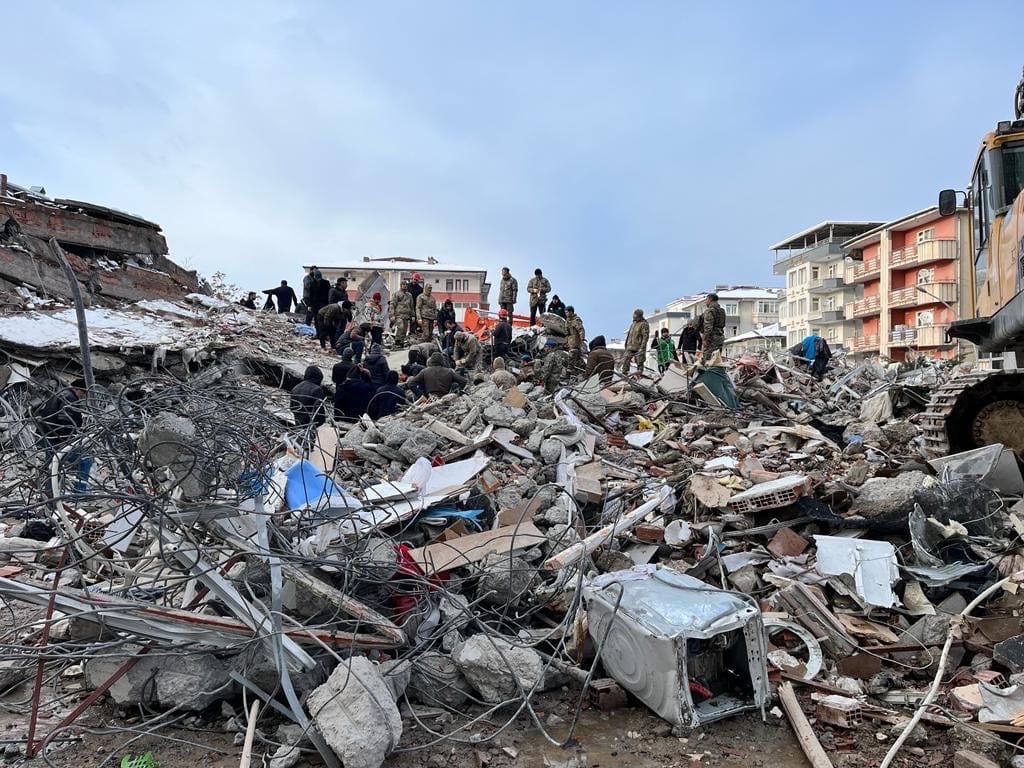

On Feb. 6, a magnitude 7.8 earthquake occurred in southern Turkey near the northern border of Syria. This quake was followed approximately nine hours later by a magnitude 7.5 earthquake located around 59 miles (95 kilometers) to the southwest.
The first earthquake was the most devastating to hit earthquake-prone Turkey in more than 20 years and was as strong as one in 1939, the most powerful recorded there. It was centered near Gaziantep in south-central Turkey, home to thousands of Syrian refugees and the many humanitarian aid organizations also based there.
The Turkish government is leading the response there through coordination by AFAD and with the Turkish Red Crescent, however, international nongovernmental organizations (INGOs) and local NGOs form a large part of the Turkey response. State authorities declared a level-4 emergency leading to a call for international assistance. Turkish President Recep Tayyip Erdogan declared a three-month state of emergency in 10 of the country’s provinces.
Governments around the world were quick to respond to requests for international assistance, deploying rescue teams and offering aid. While countries have offered to support Turkey and funded flash appeals, and the country has disaster management structures to support the response, getting aid to affected Syrians is more difficult. The country of Turkey is recognized in English as Türkiye by the United Nations (UN).
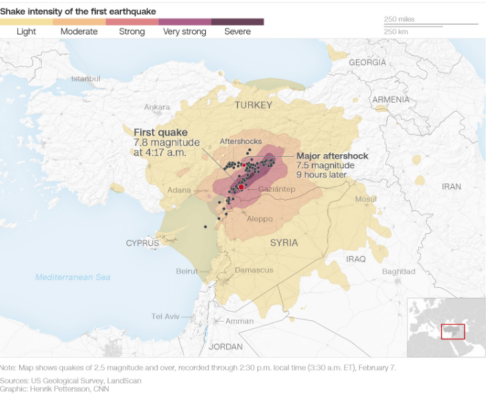
As of March 1, more than 11,000 aftershocks occurred, according to Turkey’s Disaster and Emergency Management Authority (AFAD). Aftershocks are expected to continue for the foreseeable future.
On Feb. 8, Turkey’s President Erdogan admitted to problems with his government’s initial response amid frustration with the pace of relief and the earthquake’s devastation. Turkey is investigating some contractors, but the entire political and economic system is arguably implicated.
(Photo: Members of the Turkish Armed Forces conduct search and rescue efforts after the earthquake, Feb. 7, 2023. (Source: Republic of Türkiye Ministry of National Defence via Twitter)
Syria’s current complex humanitarian emergency is among the largest humanitarian crises in the world and the earthquake will only exacerbate the situation and vulnerabilities. One obstacle in providing aid in Syria is that the government does not control all the northwest, the area hardest hit by the earthquake. Coordinated assistance by the UN to Syria’s northwest arrives across the border from Turkey, while Damascus is where assistance is coordinated within the rest of government-controlled Syria.
In northwest Syria, 4.1 million people depend on humanitarian assistance, the majority of whom are women and children.
As of Feb. 14, three border-crossing points were opened for UN aid delivery: Bab Al-Hawa, Bab Al-Salam and Al-Ra’ee. However, hostilities in the region have largely remained since the disaster, prompting accusations that life-saving aid was being politicized.
On July 10, Russia used its veto at the UN Security Council to block a renewal of cross-border aid at Bab Al-Hawa. The UN said in a statement, “The renewal of the authorisation is essential, as Bab al-Hawa remains the centre of gravity for the UN’s cross-border response, including being in close proximity to Idlib, where most of the people in need in north-west Syria live.”
Syria opened the door to resuming access via the border crossing, however, with several conditions that the UN had cited as “unacceptable issues.” Yet, on Aug. 7, the UN announced it had reached an agreement with Syria to reopen the Bab Al-Hawa crossing for six months. Around 85% of aid deliveries to the northwest Idlib region pass through Bab Al-Hawa, so its reopening is significant. The UN’s statement gave no details on the agreement reached with the Syrians.
Access through the Bab al-Salam and al-Ra’ee border crossings, which were opened after the February earthquake, were extended until Nov. 13, 2023. The UN conducted 32 cross-border missions to northwest Syria in the month of August 2023.
Latest Updates
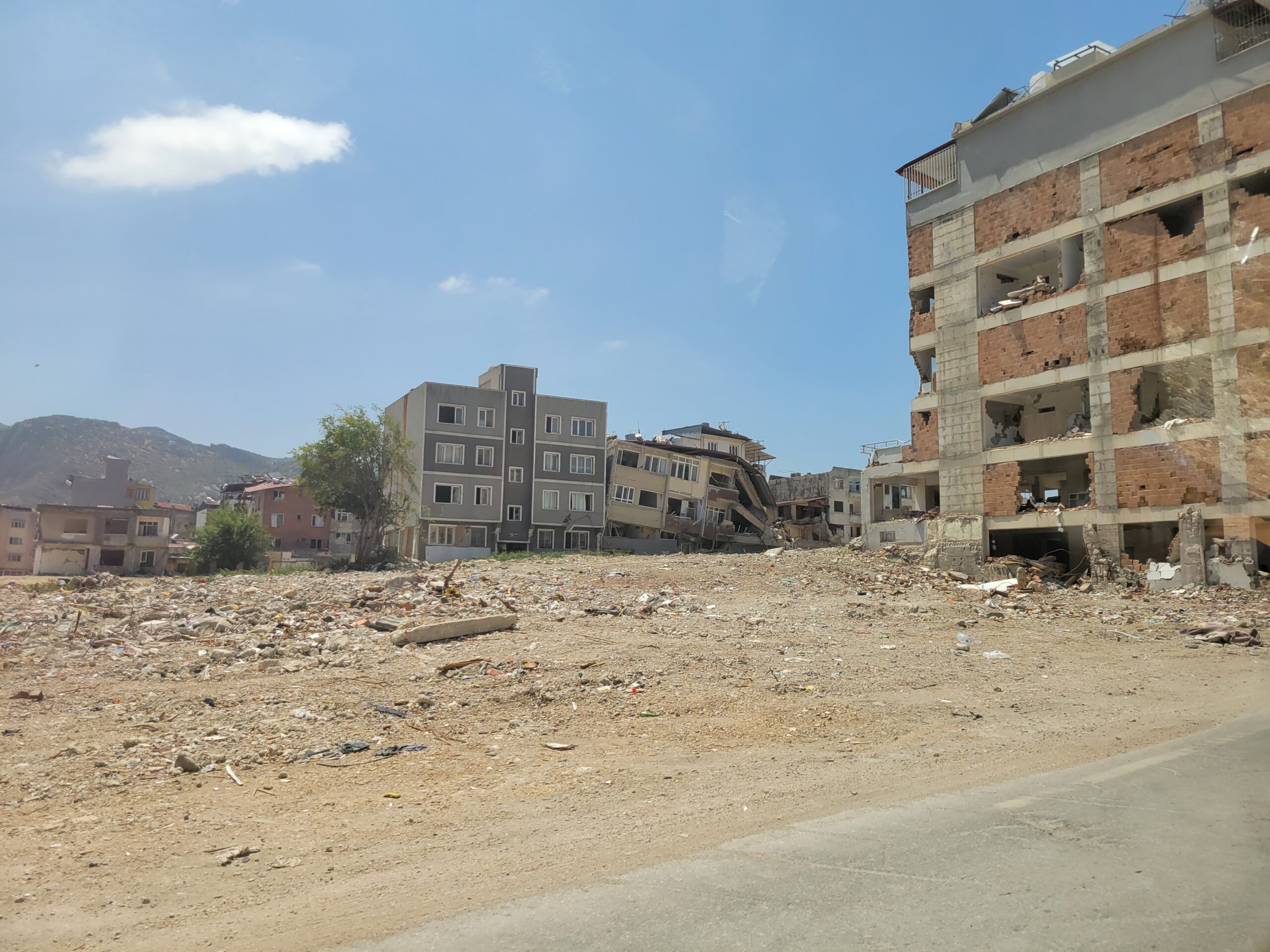
Announcing grants to support Turkey-Syria earthquake recovery
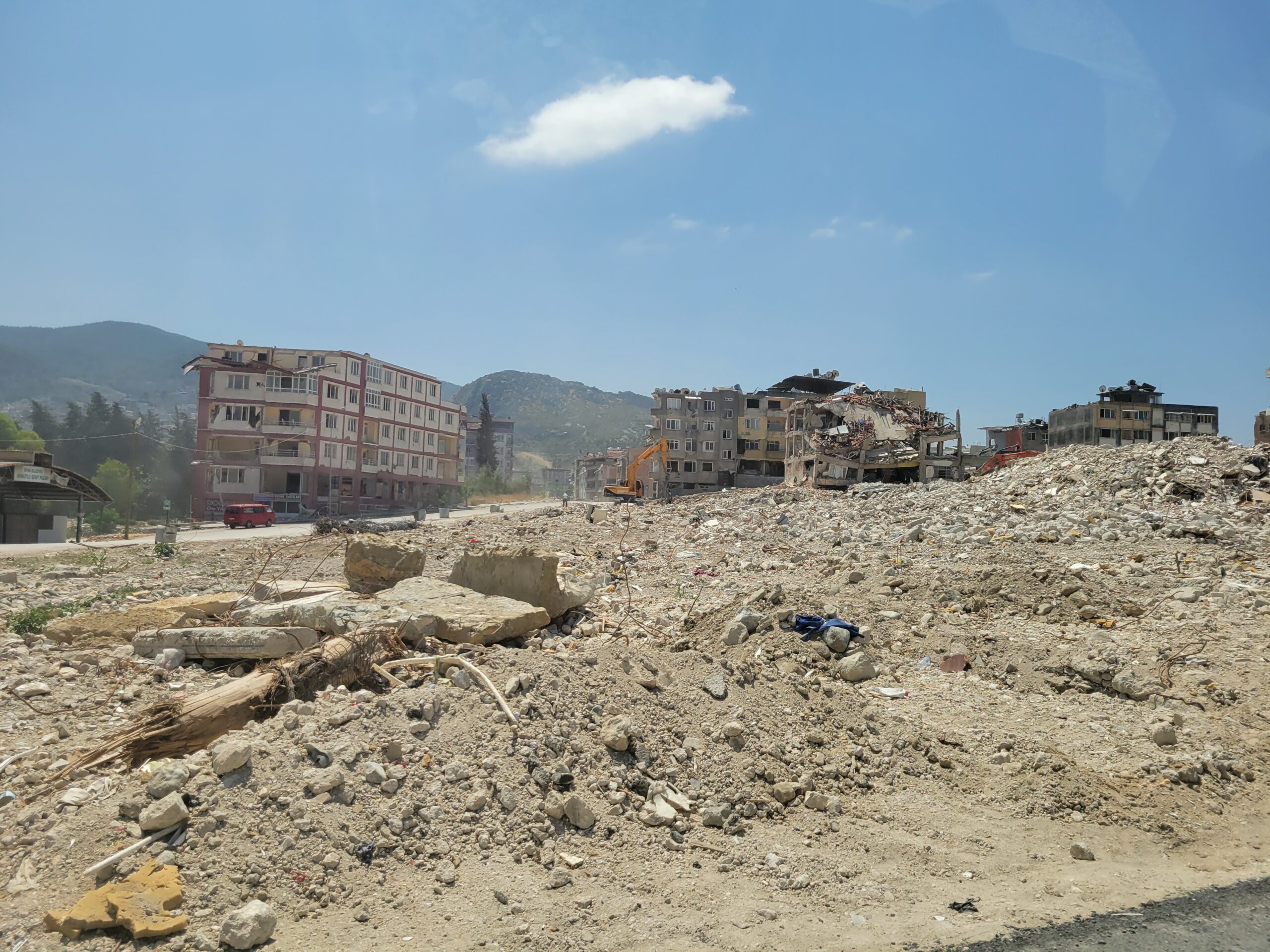
How do you recover from a massive earthquake? What’s next in Turkey and Syria?
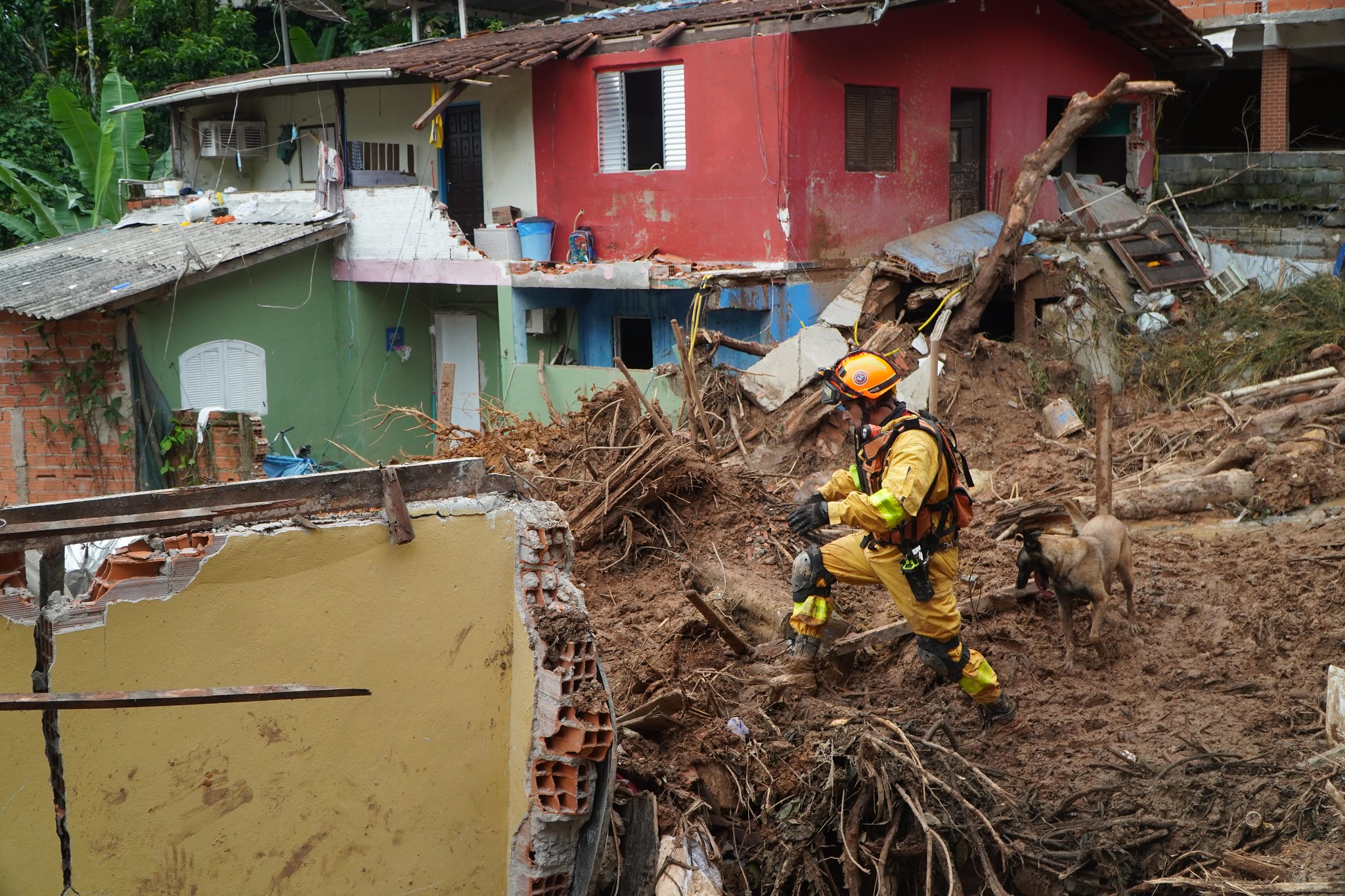
What we’re watching: Weekly disaster update, February 27
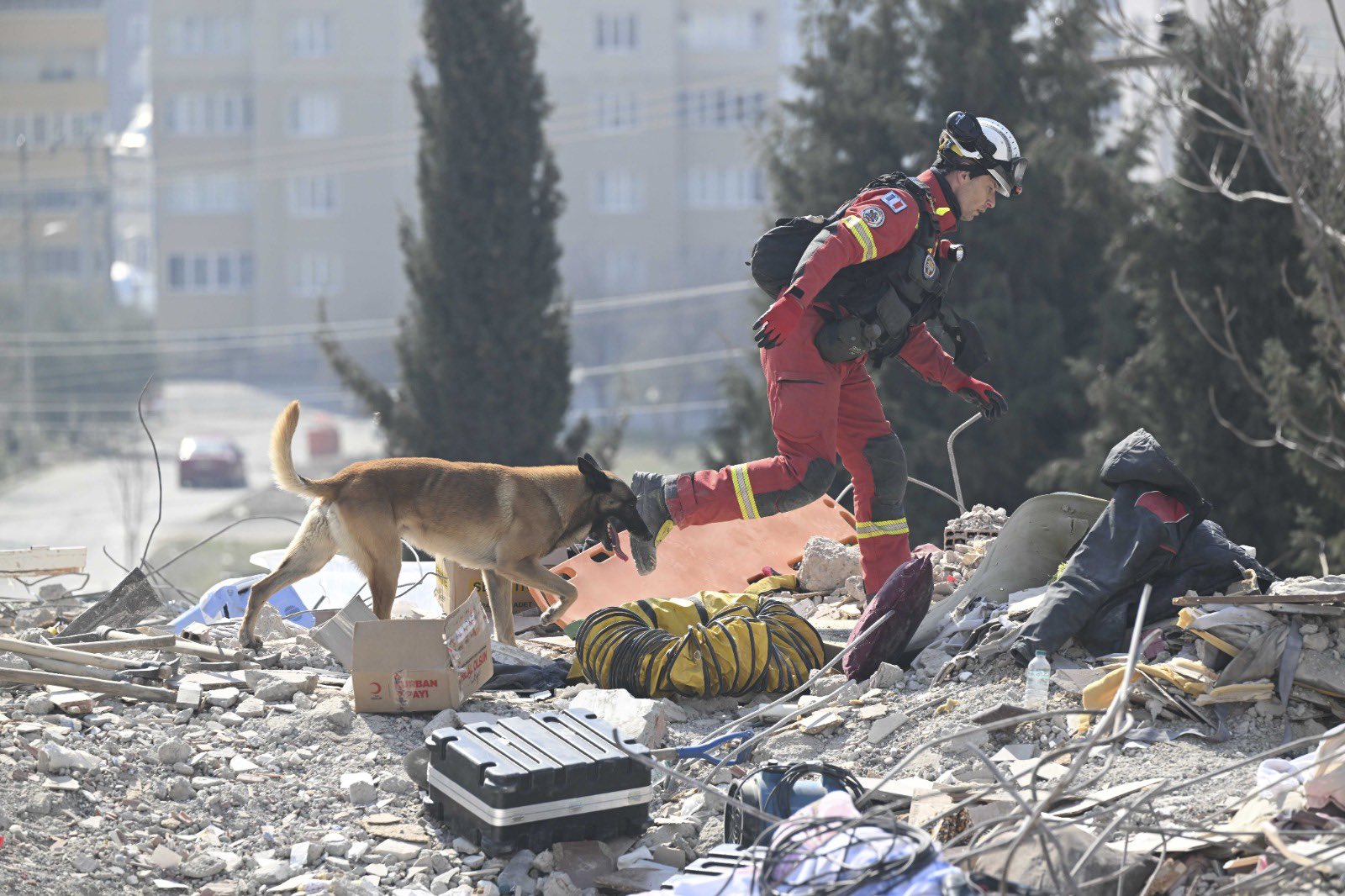
The Patterson Foundation Contributes $375,000 to CDP’s Turkey & Syria Earthquake Recovery Fund
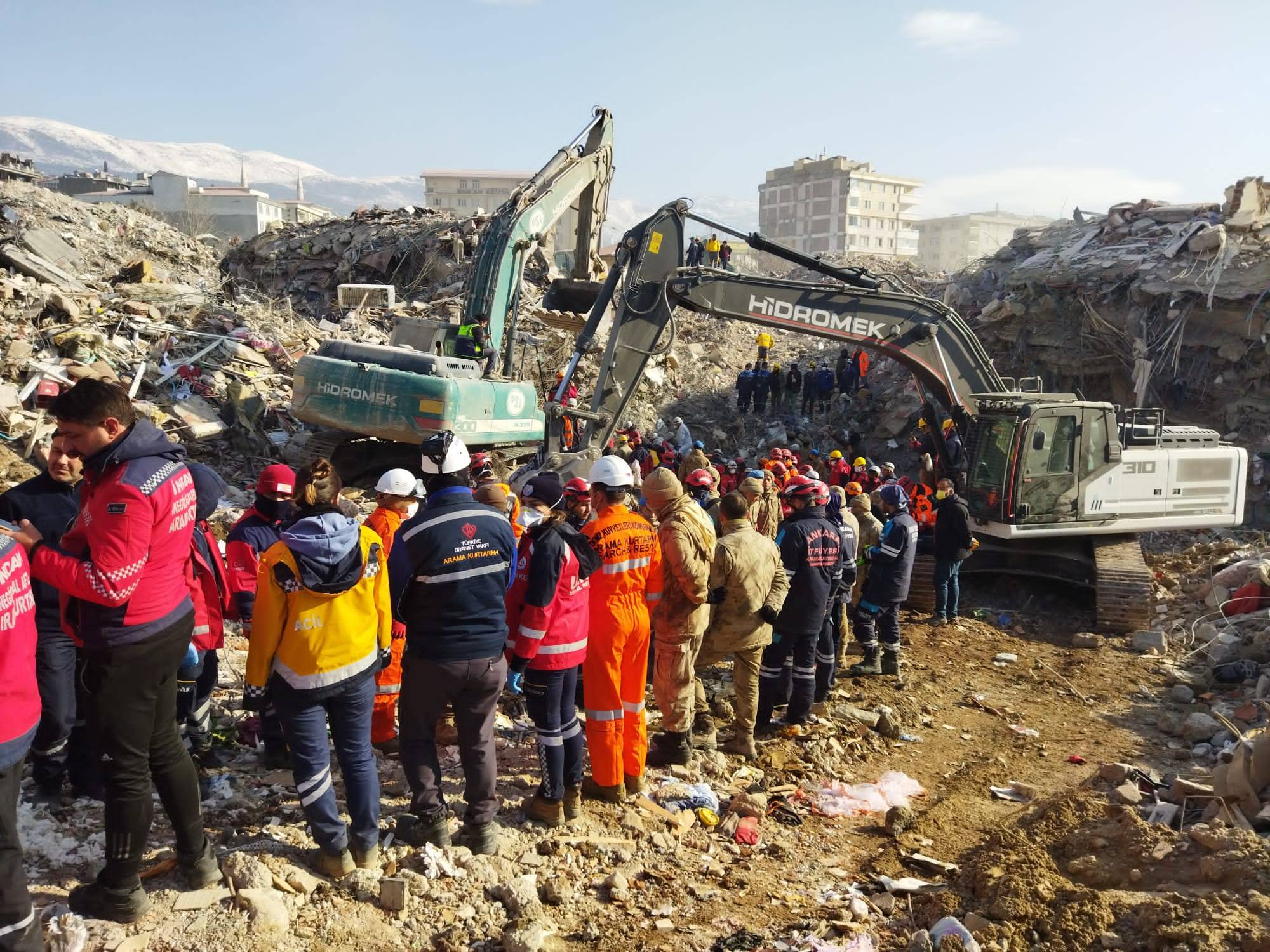
What we’re watching: Weekly disaster update, February 20
Key facts
- The earthquakes and underlying vulnerabilities resulted in the deaths of at least 56,000 people in Turkey and Syria. Local actors report that authorities stopped counting and this figure is most likely much higher. Aid workers are among those killed.
- The humanitarian community estimates that 8.8 million people live in areas most affected by the earthquake in Syria. Overall, 170 sub-districts in 43 districts in 10 of Syria’s governorates have been impacted by the earthquake. Prior to the earthquake, more than 15 million people in Syria were already in need of assistance in 2023.
- On Feb. 9, the U.S. Department of the Treasury announced that it was issuing a 180-day “general license” for earthquake relief in Syria, which is effectively a suspension of sanctions.
- At least 230,000 buildings were damaged or destroyed across 11 provinces in Turkey and at least 10,600 buildings have been completely or partially destroyed in northwest Syria. In Aleppo alone, around 3,500 buildings are damaged and need structural repair and 700 buildings are classified as unsafe.
- According to the World Bank’s Global Rapid Post-Disaster Damage Estimation (GRADE) Report, direct damages in Turkey from the earthquakes are estimated at $34.2 billion. The report says the reconstruction costs “will be higher depending on the extent of new construction codes and guidelines being used.”
- The Syria Earthquake 2023 Rapid Damage and Needs Assessment (RDNA) found that the country’s real gross domestic product is expected to contract by 5.5% in 2023 following the February 6 and February 20 earthquakes.
- The Syria Earthquake 2023 RDNA says physical damages caused by the earthquake are estimated at $3.7 billion, while losses are estimated at US $1.5 billion. The total estimated impact to US $5.2 billion. The GRADE Report for Syria had estimated $5.1 billion in direct physical damages. The RDNA estimates recovery and reconstruction needs across the six assessed governorates at $7.9 billion.
- Through August 2023, camps and self-settled sites hosted close to two million internally displaced persons (IDPs). Among these, around 80% are women and children and particularly vulnerable to many risks, including gender-based violence.
- The International Organization for Migration reports that 3 million people have been displaced by the earthquakes in Turkey. As of Aug. 8, 2023, there were 81,264 households living in temporary sites in the four most affected provinces, a 59% decrease compared to March 2023 data.
- In earthquake-affected provinces of Turkey, about 40% of households live below the poverty line, compared to 32% nationwide. It is estimated that this rate could rise to more than 50%.
- UNDP said the earthquakes generated at least 10 times as much rubble in Turkey as the last big Turkish earthquake in 1999. Both affected countries face the daunting task of disposing of hundreds of millions of tonnes of rubble, some of it potentially harmful.
Existing humanitarian crisis worsened
In northwest Syria, the hardest hit area of the country, 4.1 million people already depended on humanitarian assistance before the earthquakes.
After 12 years of conflict and recent earthquakes, the World Food Programme says 12.1 million people in Syria, more than 50% of the population, are food insecure. In May, the UN said for the first time in the 12-year conflict, people in every district are experiencing some degree of “humanitarian stress.”
In June 2023, The New Humanitarian reported that the economic aftershocks of the earthquakes and runaway inflation mean people are seeing rising food prices in Syria, but less food aid, which officials blame on low funding levels, also plays a part.
According to UNOCHA, “In 2022, 85 per cent of households [in Syria] were unable to meet their basic needs, with a disproportionate impact on populations with vulnerabilities compounded by age, gender, and/or disability. In a country where only 59 per cent of hospitals, 57 per cent of primary health care facilities and 63 per cent of specialized centres were fully functional before the earthquake, this earthquake will result in a further collapse of basic services, and significantly delay any scope for recovery.”

The Syrian complex humanitarian emergency is characterized by more than 10 years of ongoing hostilities and their long-term effects, including large-scale internal and cross-border displacement, widespread destruction of civilian infrastructure, and significant violations of international humanitarian law.
In the wake of the earthquakes, there was a lull in fighting; however, as detailed in a March 23 briefing to the UN Security Council, UN officials warned of the slow rise in shelling exchanges, rocket fire and crossline raids by terrorist groups.
On Oct. 24, Paulo Pinheiro, Chair of the Independent International Commission of Inquiry on the Syrian Arab Republic, said to the UN General Assembly, “Today I stand before you to say we are witnessing the largest escalation of hostilities in Syria in four years. Yet again there appears to be total disregard for civilians lives in what are often tit for tat reprisals.”
The International Rescue Committee’s policy, advocacy and communications director for Middle East and North Africa Mark Kaye said, ”For this area, you have to remember: This population [was] already highly vulnerable. They have a huge amount of people who have already been displaced — sometimes as many as 20 times … Almost the majority of them are women and children, particularly vulnerable to the harsh weather and this earthquake.”
Food insecurity
According to UNOCHA in their Sept. 13, 2023, northwest Syria situation report, “The Food Security and Livelihoods Cluster reported that the number of acutely food-insecure people has increased from 3.3 million to 3.7 million people – or 82 per cent of the population – following the earthquakes.”
However, the World Food Programme announced that it was forced to scale down its operation in Syria in July because of “an unprecedented funding crisis.”
In their March 27 Syria Earthquake Situation Report, OCHA said there is “a need to provide support to farmers and agricultural activities in urban areas.” In Turkey, the United Nations Food and Agriculture Organization (FAO) said the earthquakes caused $6.7 billion in losses and damage to crops, livestock production, food stocks, agricultural infrastructure and assets.
FAO also said that the earthquake severely impacted 11 key agricultural Turkish provinces affecting more than 15 million people and more than 20% of the country’s food production. These damages may affect food security in the country. Meeting the food security and livelihood needs of underserved populations in Turkey is proving challenging, especially in rural areas and informal settlements.
A post-earthquake rapid needs assessment on agricultural livelihoods and production in northwest Syria conducted by FAO found that more than a third of the key informants reported damage to community-level agricultural structures and up to 80% reported damage to agricultural equipment in their village. Agriculture is a major source of livelihood in these communities, raising concerns about affected people’s ability to provide for themselves.
Ongoing disaster risk
According to ACAPS, new earthquakes are among the worst-case scenarios for the region because they could impact humanitarian needs and the ability to meet them. Damaged buildings are at high risk of collapse, and survivors may continue to experience ongoing fear while also beginning to deal with lasting trauma.
On Feb. 20, a 6.4 magnitude earthquake killed three people and injured 213 in southern Turkey. On Feb. 27, a magnitude 5.6 earthquake shook southern Turkey, causing damaged buildings to collapse and killing at least one person.
Following the earthquake, a dam collapsed in northwestern Syria, causing the overflow of the Orontes River. The flood led to the displacements of people from the village of Al-Tlul in Idlib governorate. Approximately 7,000 people were evacuated, and 1,000 houses flooded across the nearby villages of Hardana, Delbiya, Jakara and Hamziyeh.
On March 15, floods caused by heavy rains resulted in the deaths of 15 people in the southern Turkey provinces of Sanliurfa and Adiyaman. Two people died in Adiyaman when waters swept away a container home where a group of earthquake survivors was living. Some people were evacuated from a waterlogged campsite where earthquake survivors were sheltering in tents.
On March 18, heavy rainfall and storms affected northwest Syria, destroying around 600 tents and damaging 897. Most of these tent sites were created for displaced people following the earthquakes.
The floods are an example of an indirect and cascading disaster impact that humanitarians must account for while trying to minimize risk as they provide assistance and begin recovery. The displaced population affected by the dam collapse and subsequent flooding is partially returning. However, the dam cannot be repaired immediately, and people are at risk of catching waterborne diseases.
Earthquakes are among the most devastating natural hazards. Turkey’s two main fault zones make the region one of the most seismically active in the world. Natural hazards only become disasters when they interact with a human society or community, referred to as vulnerability in disaster studies.
In this disaster, vulnerability looks like poorly constructed buildings that do not meet modern earthquake building standards, thousands of Syrian refugees in Turkey or displaced people in northwest Syria that live in informal settlements, destruction of infrastructure within Syria after years of war and aerial bombings, an ongoing complex humanitarian emergency in Syria due to conflict, and a cholera outbreak.
For these reasons, the earthquake that devastated Turkey and Syria cannot be called a “natural disaster.” While natural hazards, such as earthquakes, are inevitable, their impact on society is not. People affected by the disaster know this instinctively due to their lived experience. One shop owner in southern Turkey said, “We knew that we lived in an earthquake zone. It’s not fate. People are to blame for making weak buildings.”
Funders can help minimize the impact of this unfolding disaster and additional disasters in Turkey and Syria by advocating for safe building construction, supporting risk communication campaigns, investing over the long-term to ensure full recovery that incorporates risk reduction, and strengthening preparedness and resilience.
Shelter
In their April 20 Turkey Earthquake Situation Report, UNOCHA stated, “Approximately 890,000 units are reportedly destroyed/critically damaged, and more than 1,8 million units are lightly damaged (AFAD, 12/04/2023) however, those with light damage are not necessarily providing adequate living conditions.”
At least 10,600 buildings were completely or partially destroyed in northwest Syria. In Aleppo alone, around 3,500 buildings are damaged and need structural repair and 700 buildings were classified as unsafe.
According to the World Bank’s Global Rapid Post-Disaster Damage Estimation Report, direct damages in Turkey from the earthquakes are estimated at $34.2 billion. The total direct damages are mostly damages to residential buildings ($18 billion or 53% of total). The report says that based on global experience, “recovery and reconstruction costs will be much larger, potentially twice as large” as the $34.2 billion figure.
The GRADE Report for Syria estimates $5.1 billion in direct physical damages. The World Bank says, “Direct damages to residential buildings account for nearly half of total damages (48.5% of the median value or US$2.5 billion), while damages in non-residential buildings (e.g., health facilities, schools, government buildings, and private sector buildings) account for one third of the total impact (33.5% or US $9.7 billion).”
Additionally, the GRADE Report for Syria found that “Aleppo (population of 4.2 million) was the most severely hit governorate with 45% of the estimated damages (US$2.3 billion) followed by Idlib (37% or US$1.9 billion) and Lattakia (11% or US$549 million).”
Cash assistance
As with most disasters and emergencies, cash donations are recommended by disaster experts as they allow for on-the-ground agencies to direct funds to the most significant area of need, support economic recovery and ensure donation management does not detract from disaster recovery needs and quickly re-establishing access to basic needs.
UNOCHA identified cash assistance as a primary need following the earthquake in their first flash update after the disaster.
According to a REACH rapid assessment involving 604 communities in northwest Syria, multi-purpose cash assistance was the top priority need among affected communities. According to the northwest Syria Cash Working Group, humanitarian partners distributed cash assistance worth $13 million to more than 448,000 people in northwest Syria. In Turkey, humanitarians are being urged to emphasize the importance of transitioning from in-kind aid provision to cash response.
The Center for Disaster Philanthropy recommends cash both as a donation method and a recovery strategy. Direct cash assistance can allow families to purchase items and services that address their multiple needs. It gives each family flexibility and choice, ensuring that support is relevant and timely. Cash-based approaches to disaster recovery also give people the freedom to choose how they rebuild their lives and provide a pathway to economic empowerment.
CALP Network compiled information and advice for those involved in cash and voucher assistance programming in Turkey and Syria drawing on learning from comparable crises.
Health
Striking without warning, earthquakes often are among the most devastating natural hazards. The aftermath of an earthquake can bring immediate and long-term health impacts, especially in lower-middle-income countries. This is especially concerning in the context of Syria where a cholera outbreak was spreading before the earthquake.
Many hospitals in northwestern Syria were left non-operational due to damage from the earthquake, and patients were stranded. In their Sept. 13, 2023, northwest Syria situation report, UNOCHA said, “nearly a third of 601 health facilities in north-west Syria are non-functional, 67 of them were damaged by the earthquakes.”
Between Aug. 25 and March 4, 100,598 suspected cholera cases were reported from all 14 governorates, including 104 associated deaths. The earthquake had a significant impact on the cholera response operations.
CDP’s NGO partners have reported that a need in northwest Syria is access to clean water. Given the existing cholera outbreak and damage to already fragile water infrastructure, there are concerns about a possible spike in waterborne diseases. There are reports that wells are at high risk of collapsing. Equipment for water analysis and monitoring is critically needed.
Water, sanitation and hygiene issues are pressing in Turkey as well, with data showing a high number of people per toilet and shower ratios within affected area campsites. There are also concerns about increasing health issues within tent camps. The gap in access to clean water, sanitation and hygiene facilities can lead to poor health outcomes, the spread of diseases and exacerbate existing vulnerabilities. Scaling up services for sexual and reproductive health and violence against women, girls and other individuals in situations of vulnerability is another need.
Livelihood and food security
In the Syria earthquake Flash Appeal launched by the UN and humanitarian partners, one of the three strategic objectives is to “support livelihoods and basic services in areas affected by the earthquake.”
In addition to cash assistance, strengthening livelihoods is important, considering Syrian households have gradually lost their purchasing power while food prices have almost doubled since last year.
Support for livelihoods will include providing short-term employment for debris clearance and small-scale rehabilitations. The early recovery and livelihoods sector response includes supporting the immediate livelihood needs of the affected population by distributing multi-purpose cash.
Very little funding has been committed to support socioeconomic early recovery. An urgent need is to support small and medium-sized enterprises, cooperatives and local farmers to resume economic activity, including income-generating activities in the most affected areas.
The NGO Support to Life said in their Turkey earthquake Aug. 17 situation report, “Enhancing support mechanisms for improving economic conditions in the earthquake-affected region is becoming crucial. Small and medium-sized businesses, cooperatives, local farmers, and workers have been particularly negatively affected.”
Mental health and psychosocial support
The earthquake affected people already displaced and will result in new displacements, which are a significant change in people’s way of life, perhaps including loss of livelihood, extreme poverty and damaged social support structure. Because of the ongoing conflict, displaced Syrians also may have post-traumatic stress disorder.
The number of people with mental health conditions is expected to increase post-earthquake while also limiting access for many people in need to the already scarcely available mental health services in Syria. According to UNOCHA, in northwest Syria, 994,500 persons have a mental disorder, and 229,500 have severe mental disorders. However, only 24 psychologists are available in the area.
Survivors of the deadly earthquakes are forced to deal with lasting trauma. In northwest Syria, psychological first aid, case management and safe service points are overwhelmed with rising needs.
Providing support for psychosocial and mental health support is critical.
Protection and support for marginalized populations
After a disaster, protecting marginalized individuals and ensuring access to their basic rights are immediate priorities.
According to UNOCHA, “Gender inequality exacerbates the impact of disasters, and the impacts of disasters exacerbate gender inequality and vulnerability. Of particular concern are vulnerable women, children, older persons and persons with disabilities who are disproportionally affected. Learning from other similar contexts, the risks of sexual exploitation and abuse will likely increase with the limitation of mobility in the earthquake response, disruption of social safety nets and the lack of information around confidential reporting mechanisms makes it difficult for survivors (including children) to access whatever response services remain operational.”
Due to the layout and population density of some settlement sites, women and girls face increased protection risk of exploitation and abuse. In many of such sites, a lack of sex-segregated toilets, overcrowding, and an absence of privacy in water, sanitation and hygiene facilities and tent areas, has led to an increase in sexual violence risks, particularly against women and adolescent girls.
Psychological stress is high in such contexts. In northwest Syria, where 97% of the population lives on less than two dollars a day, women report domestic violence as a major concern. Homelessness and onward movement can create or exacerbate protection risks. The protection and security of children are also major concerns.
The Turkey Protection Sector Post-Earthquake Inter-Agency Needs Assessment Round 7 interviewed 3,803 earthquake-affected households between July 6-29, 2023. Key findings included about half of all respondents reported feeling adequately informed about their rights and the services available in Turkey (compared to 56% in Round 6). Also, in the previous six months, 90% of respondents attempted to access services and among these, 44% reported not being able to access them.
Turkish NGO Support to Life reinforced the need for improved access in their Sept. 15, 2023, situation report: “There are service gaps in accessing accurate and up-to-date information about existing services and aid. Vulnerable groups such as Syrian refugees, Dom and Abdal communities, women, LBGTQIA+ individuals, children, elderly, people with special needs and individuals with disabilities continue to face problems in accessing services.”
CARE, a humanitarian organization, released its first Rapid Gender Analysis (RGA) Brief for the earthquake. The RGA “explores existing gender, age and disability data and information to understand pre-existing vulnerabilities and capacities and how best humanitarians can respond to meet people’s different needs.” Recommendations to humanitarian actors, international non-government organizations and AFAD include:
- Collaborate with relevant local and national actors, including women-led organizations and women’s rights organizations who are often leading GBV prevention and response efforts.Assess sexual exploitation, abuse and harassment risk factors and integrate these into program planning and ensure all stakeholders have been informed about services and referral pathways.
The Disability and Inclusion Task Force shared with CDP in June 2023 that underfunded areas include special needs rehabilitation, physiotherapy, assistive devices and prosthetics; access to services through transportation, interpretation and receiving health reports; studies to explore the needs and challenges of people with disabilities nationally; and training on disabilities and inclusion mainstreaming.
Organizations led by and serving LGBTQIA+ people in Turkey and northwest Syria face operational challenges and most operate and provide assistance through formal and informal networks. LGBTQIA+ people in these contexts face discrimination and are often unable or unwilling to seek assistance or are actively excluded from receiving assistance. Reaching LGBTQIA+ people needs to be done through NGOs focused on this population, networks or local partners who are LGBTQIA+ friendly.
There has been a significant increase in racism against refugees in Turkey, affecting their ability to access and receive assistance and also negatively impacting tasks such as obtaining bank accounts, credit, dealing with suppliers or for children facing racism and verbal and physical violence in schools. Targeted assistance and support for this group of people are needed.
Shelter
The significant damage to community infrastructure, such as schools, hospitals, religious facilities, and housing in Turkey and Syria will require immediate and long-term assistance.
According to the Syria earthquake Flash Appeal, “The earthquake has not only resulted in additional displacement due to damaged/unsafe shelter but has also diminished the prospects for safe return of IDPs originally from earthquake-affected areas. Safe shelter will be one of the main needs in the aftermath of the earthquake.”
The government of Turkey is focused on establishing more formal sites and phasing out informal sites, however, it could take more than two years for people to move out of these informal and formal settlements and into their homes.
Evacuations from tent areas to containers have been ongoing since June 2023. Formal container sites in Turkey are being expanded as households from formal tents continue to be relocated. Although the number of tents is decreasing, it is anticipated that some households will remain in tents and will need winter assistance.
The Turkey Shelter Cluster’s 2023-2024 Winterization Strategy says, “More than 100,000 households are in formal container sites; and rough estimates suggest that more than 50,000 households are in foldable and inadequate containers. Many households continue to remain in tents.”
According to the Winterization Strategy, “As minimum standards, assistance should support households to have a structurally safe shelter with an average temperature of 18c, free from leaks and drafts.”
The Turkey Earthquakes Recovery and Reconstruction Assessment outlines a set of key principles “to ensure that the recovery from the earthquake is resilient, inclusive, green and sustainable.”
Although local and national governments are responsible for building codes and ensuring they are enforced, philanthropy can support efforts to reduce vulnerability in the built environment through research, advocacy and safe reconstruction.
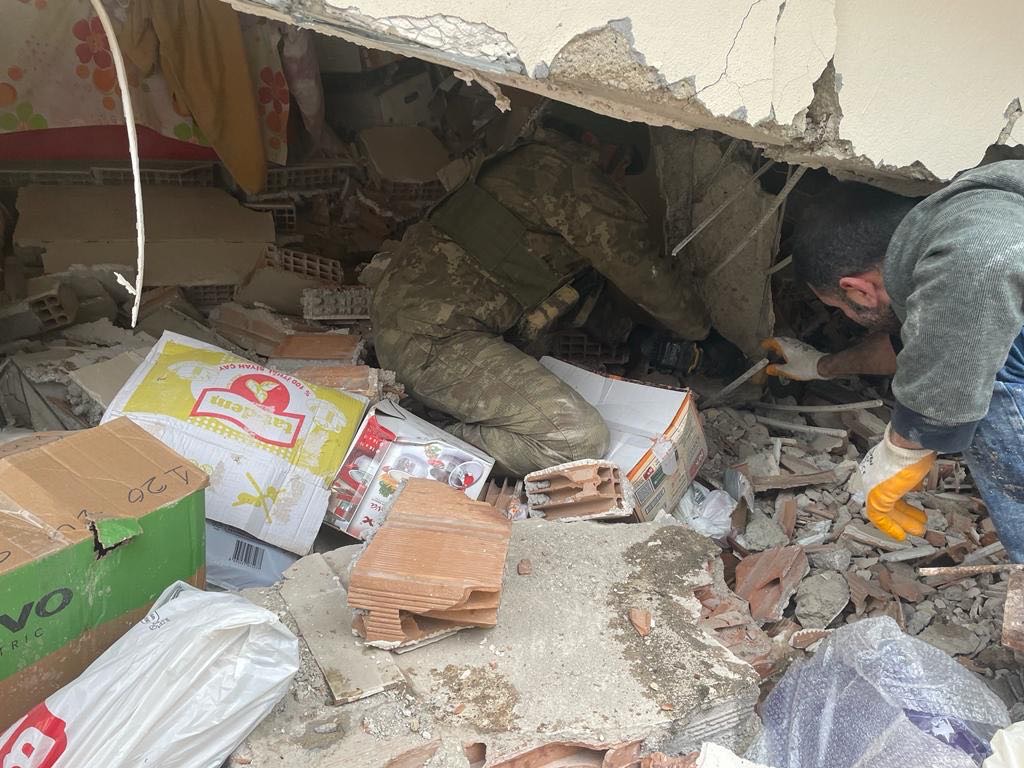
CDP has a Turkey & Syria Earthquake Recovery Fund that supports earthquake-affected families and communities as they work to rebuild and recover.
Contact CDP
Philanthropic contributions
If you would like to make a donation to the CDP Turkey & Syria Earthquake Recovery Fund, need help with your disaster-giving strategy or want to share how you’re responding to this disaster, please contact development.
(Photo: The Turkish Army supports search and rescue efforts in Turkey after the earthquake, Feb. 6, 2023. Source: Republic of Türkiye Ministry of National Defence; via Twitter)
Recovery updates
If you are a responding NGO, please send updates on how you are working in this crisis to tanya.gulliver-garcia@dphilanthropy.org.
We welcome the republication of our content. Please credit the Center for Disaster Philanthropy.
Philanthropic and government support
On Feb. 16, CDP hosted a webinar, “A layered disaster: Supporting long-term recovery in Turkey and Syria.” Speakers shared the latest information, including critical needs and gaps, and provide concrete takeaways for funders to effectively support relief and recovery efforts now underway.
The following are examples of grants CDP has provided through its Turkey and Syria Earthquake Recovery Fund:
- $199,680 to Aman Project in 2023 to support vulnerable earthquake-affected LGBTQIA+ refugees in Turkey with temporary shelter, cash assistance and support accessing services to ensure their basic needs are met and they are able to recover their lives and livelihoods.
- $250,000 to Building Markets Ltd in 2023 to provide marginalized refugee entrepreneurs with tools and financial recovery plans to restart their small businesses, supporting the economic recovery of their own households and their employees.
- $200,000 to Guardians of Equality Movement in 2023 to combat the psychological and economic impact on the most vulnerable earthquake-affected LGBTQIA+ populations in southeast Turkey and northwest Syria and build their long-term resilience.
- $750,000 to Hayata Destek Dernegi/Support to Life in 2023 to work with earthquake-affected communities in Turkey to implement 90 community-identified projects through the survivor and community-led approach.
- $40,000 to MapAction in 2023 to provide essential maps and data insights after the earthquakes to assist partners, including United Nations Disaster Assessment and Coordination and the World Health Organization, in responding to the humanitarian emergencies in Turkey and Syria.
- $350,000 to Menekşe Organizasyon Sosyal Yardimlaşma Ve Dayanişma Derneği (Violet Organization of Relief and Development) in 2023 to support vulnerable earthquake-affected communities, especially women and youth, to rebuild their livelihoods and resilience following the devastating earthquake in Syria.
- $750,000 to Sened Derneği in 2023 to provide multi-sectoral and integrated shelter, protection, education and livelihood support to the most vulnerable earthquake-affected individuals, with a particular focus on children, older adults and people living with disabilities.
- $500,000 to Toplum Kalkinma Derneği in 2023 to reconstruct the marketplace in Jandairis, creating a vibrant, inclusive hub for commerce, trade and entrepreneurship, fostering economic growth, community development and social cohesion post-earthquake.
The Council on Foundations published a list of resources to guide the philanthropic response to the Turkey and Syria Earthquake. Candid is tracking the global response to the earthquake in Turkey and Syria, and as of Oct. 27, 2023, there are 396 grants and pledges worth more than $483 million, including 340 grants worth $277,367,852 and 56 pledges worth $205,948,679.
The UN and humanitarian partners launched an earthquake Flash Appeal for Syria covering February to March 2023. The Flash Appeal requests $397.6 million to reach 4.9 million people and is complementary to the 2022-2023 Syria Humanitarian Response Plan (HRP). As of July 20, donors had funded 100% of the Flash Appeal; however, the HRP was only 29.5% funded as of Oct. 27.
An earthquake Flash Appeal for Turkey was announced on Feb. 17 and covers February to April 2023. Turkey’s Flash Appeal requests $1 billion to reach 5.2 million people. As of Oct. 27, donors had funded 53.7% of the Flash Appeal.
The UN’s Connecting Business initiative Network in Turkey is actively involved in the response. The network is mobilizing its regional federations to support efforts on the ground. An example of corporate engagement is the partnership between the International Organization for Migration, Amazon and the UPS Foundation, which led to deliveries of humanitarian aid to the earthquake zone in southeast Turkey and northwest Syria.
On Feb. 9, the World Bank announced $1.78 billion in assistance to help with Turkey’s relief and recovery efforts. Immediate assistance totaling $780 million will be provided and an additional $1 billion in operations is also being prepared.
Governments around the world were quick to respond to requests for international assistance, including Arab countries. A day after the earthquake, the United Arab Emirates announced $100 million in humanitarian assistance. Alliance reports that governments and charities across Asia have also been mobilizing to respond to the earthquakes’ devastation.
U.S. President Joe Biden “authorized an immediate U.S. response” in the aftermath of the earthquake. On Feb. 10, the U.S. Agency for International Development (USAID) pledged $85 million for shelter, cold weather supplies, food, water and healthcare. Samantha Power, the USAID director, deployed a Disaster Assistance Response Team. On Feb. 19, U.S. Secretary of State Antony Blinken announced an additional $100 million in aid for Turkey and Syria.
A critical development that should help facilitate additional aid flows into Syria occurred on Feb. 9, when the U.S. Department of the Treasury announced that it was issuing a 180-day “general license” for earthquake relief in Syria, which is effectively a suspension of sanctions.
The European Commission said on March 20 it will support Turkey with $1.07 billion (€1 billion) to help with reconstruction. Ursula von der Leyen, the president of the European Union’s executive arm, also pledged more than $115 million (€108 million) in humanitarian aid for Syria at the opening of a donors’ conference in Brussels. On March 21, around $7.5 billion (€7 billion) were pledged by the international community at the “Together for the people of Türkiye and Syria” International Donors’ Conference.
More ways to help
CDP has also created a list of suggestions for foundations to consider related to disaster giving. These include:
- Prioritize investments in local organizations: Local humanitarian leaders and organizations play a vital role in providing immediate relief and setting the course for long-term equitable recovery in communities after a disaster or crisis. However, these leaders and organizations are mostly under-resourced and underfunded. Grant to locally-led entities as much as possible, especially considering the vast majority of the NGOs in the northwest Syria NGO Forum are Syrian-led. In northwest Syria, the response and recovery is very much locally-led and these organizations need flexible and stable funding. When granting to trusted international partners with deep roots in targeted countries, more consideration should be given to those that empower local and national stakeholders.
- Take the long view: Even while focusing on immediate needs, remember that it will take some time for the full range of needs to emerge. Be patient in planning for disaster funding. Recovery will take a long time and while recovery efforts can begin immediately, funding will be needed throughout. The latest humanitarian response plans now include planning, prioritizing and implementing recovery activities.
- All funders are disaster philanthropists: Even if your organization does not work in a particular geographic area or fund immediate relief efforts, you can look for ways to tie disaster funding into your existing mission. If you focus on education, health, children or vulnerable populations, disasters present prime opportunities for funding these target populations or thematic areas.
- Ask the experts: If you are considering supporting an organization that is positioned to work in an affected area, do some research. CDP and InterAction can provide resources and guidance about organizations working in affected communities.
Resources
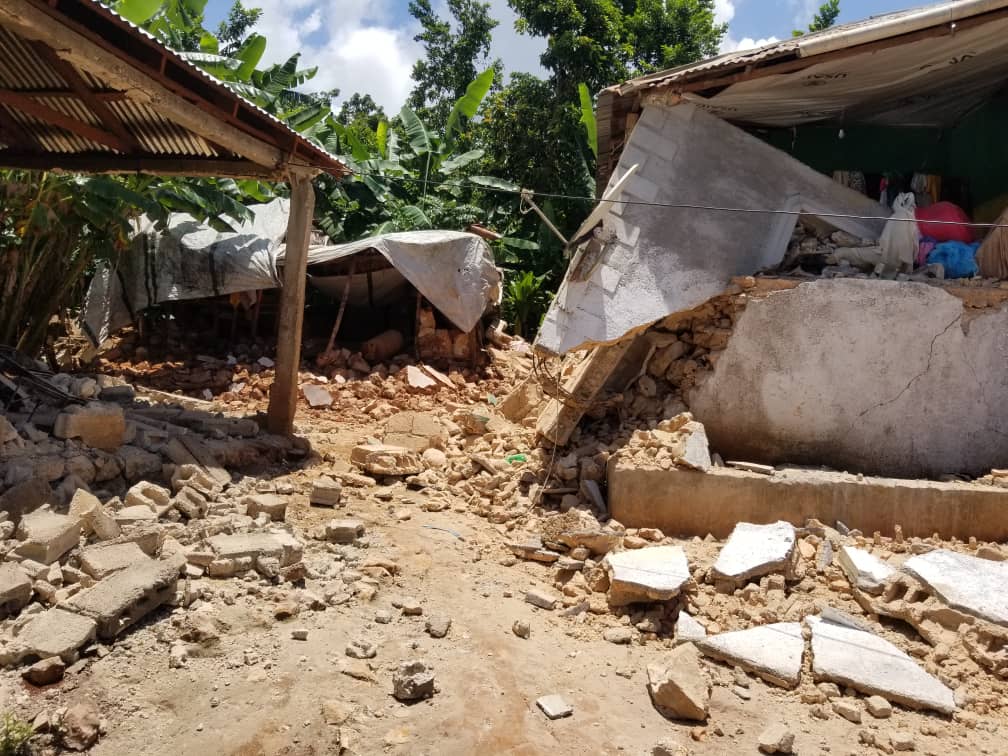
Earthquakes
Striking without warning, earthquakes often are among the most devastating disasters. Caused by the movement of plates along fault lines on the earth’s surface, earthquakes often leave a monumental path of instant death and destruction.
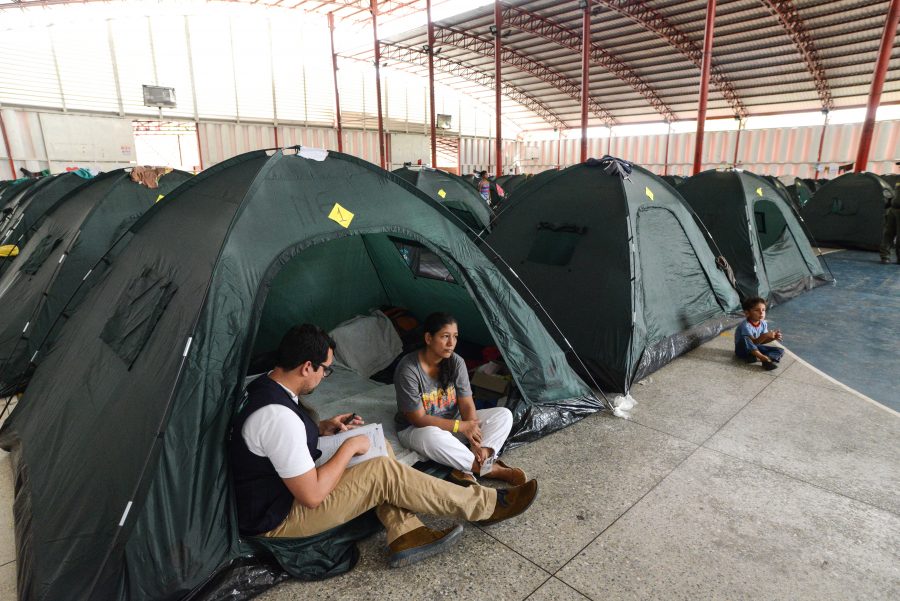
Complex Humanitarian Emergencies
CHEs involve an acute emergency layered over ongoing instability. Multiple scenarios can cause CHEs, like the civil wars in Syria and Yemen, the man-made political crisis in Venezuela, or the public health crisis in Congo.

Disaster Phases
Disasters affect millions of people and cause billions of dollars in damage globally each year. To help understand and manage disasters, practitioners, academics and government agencies frame disasters in phases.